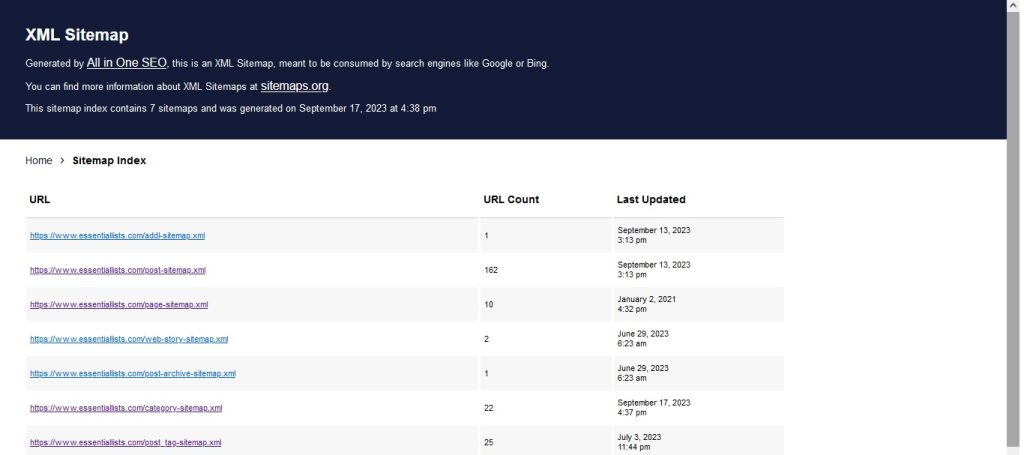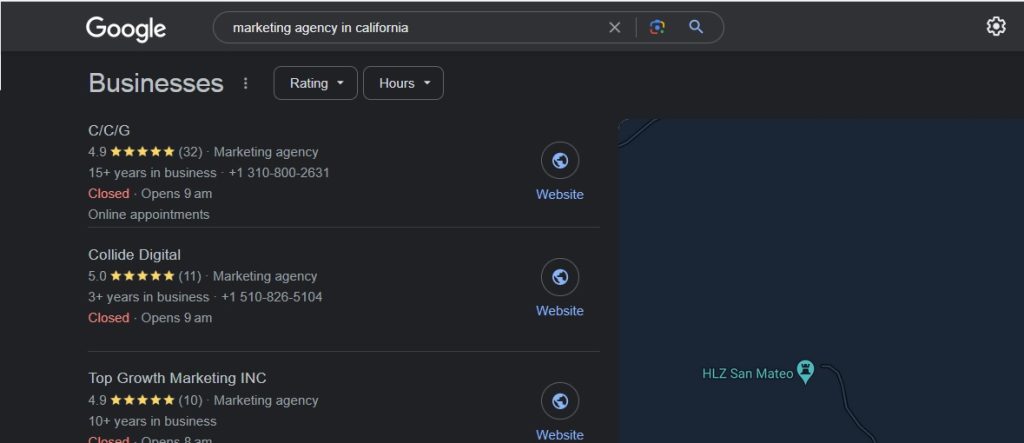Essential Steps in Technical seo
In the rapidly evolving digital landscape, search engine optimization (SEO) has become a cornerstone for online success. While content quality and backlinks remain crucial, technical SEO plays an equally significant role in boosting a website’s visibility and rankings on search engines. This article will delve into the intricacies of technical SEO, discussing step-by-step the essential measures required to enhance website performance, ensure uniqueness, and combat plagiarism effectively.
Meaning of Technical seo
Technical SEO refers to the strategic process of optimizing a website’s infrastructure and foundation to enhance its search engine visibility and user experience. It revolves around implementing technical best practices that enable search engine crawlers to effectively access, crawl, index, and understand website content.
At its core, Technical SEO lays the foundation for successful online visibility. It encompasses a wide array of practices that enable search engines to interpret and rank web pages accurately. Without a solid technical foundation, even the best content may remain hidden from search engine results pages.
In the mobile-first era, mobile-friendliness is non-negotiable. Technical SEO ensures that websites are responsive and adaptable to various screen sizes, catering to the growing number of mobile users.
Website speed is a critical factor in both user experience and search engine rankings. Technical SEO involves optimizing page load times through techniques such as browser caching, image compression, and minimizing server response times.
Technical SEO is the process of optimizing a website for search engines, but it can also include activities meant to improve user experience. Common tasks associated with technical SEO include the following: Submitting your sitemap to Google and many more giving below.
Steps in Technical seo
Technical SEO is an intricate process that involves numerous steps to ensure a website’s optimal performance, user experience, and search engine visibility. From mobile usability and UX design to content optimization, internal linking, and server performance, each element plays a crucial role in establishing a strong online presence. Adhering to best practices, maintaining originality, and preventing plagiarism are fundamental principles that underpin successful technical SEO efforts. By implementing these comprehensive steps and continuously adapting to evolving algorithms, website owners can navigate the dynamic landscape of SEO and achieve long-term success.
For Google specifically, the easiest way to see what it’s crawling is with the “Crawl stats” report in Google Search Console, which gives you more information about how it’s crawling your website.
If you want to see all crawl activity on your website, then you will need to access your server logs and possibly use a tool to better analyze the data. This can get fairly advanced. But if your hosting has a control panel like cPanel, you should have access to raw logs and some aggregators like AWstats and Webalizer.
Make sure pages you want people to find can be indexed in Google. The two previous chapters were all about crawling and indexing, and that was no accident.
You can check the Indexability report in Site Audit to find pages that can’t be indexed and the reasons why. It’s free in Ahrefs Webmaster Tools.
- Keyword Research and Mapping
Before delving into technical optimizations, a solid foundation is laid through keyword research and mapping. Identifying relevant keywords and strategically mapping them to the website’s structure helps define content focus and user intent.
- Website Architecture and Structure
A well-organized website architecture enhances user experience and search engine crawlability. Designing a clear hierarchy with categories, subcategories, and appropriate internal linking facilitates easy navigation for both users and search engine bots.
- Mobile-Friendly Design
Given the increasing use of mobile devices, a mobile-friendly design is imperative. Responsive design ensures that the website adapts seamlessly to various screen sizes, enhancing user experience and positively impacting rankings.
- Page Speed Optimization
Page loading speed directly influences user satisfaction and search rankings. By compressing images, leveraging browser caching, and minimizing server requests, page load times can be significantly improved.
- Crawlability and Indexability
Search engines must efficiently crawl and index website content. Implementing sitemaps, optimizing robots.txt files, and fixing crawl errors using tools like Google Search Console aid in proper indexing and better search visibility.
- HTTPS and Security
Website security is a ranking factor that cannot be overlooked. Adopting HTTPS through an SSL certificate not only secures user data but also signals trust to search engines, potentially leading to higher rankings.
- Structured Data Markup
Structured data markup, such as Schema.org, helps search engines understand the context of content. Implementing structured data can lead to rich search results, increasing click-through rates and visibility.
- Canonicalization
To prevent duplicate content issues, canonical tags are employed. They indicate the preferred version of a webpage when multiple versions exist, consolidating page authority and avoiding SEO pitfalls.
- URL Optimization
SEO-friendly URLs are concise, descriptive, and easy to understand. Including target keywords and avoiding excessive parameters can improve both user experience and search rankings.
- Optimized Images and Media
Images and media are integral to engaging content, but they should be optimized for performance. Compressed images with descriptive alt text improve accessibility and contribute to faster page loading.
- XML Sitemap
XML sitemaps provide search engines with a roadmap of website content. Keeping the sitemap updated ensures that new and updated content is promptly discovered and indexed.

- Mobile-First Indexing
With Google’s mobile-first indexing, mobile versions of websites are prioritized in ranking algorithms. Ensuring content parity between desktop and mobile versions is vital for SEO success.
- Mobile Usability
Beyond just mobile-friendly design, mobile usability focuses on creating a seamless experience for mobile users. This includes optimizing touch elements, improving font legibility, and avoiding intrusive interstitials that could hinder user interaction.
- Breadcrumb Navigation
Breadcrumb navigation aids users in understanding their location within the website’s hierarchy. From an SEO perspective, breadcrumbs enhance user experience and provide additional internal linking opportunities.
- User Experience (UX) Design
User experience is a significant factor in SEO. A well-designed website with intuitive navigation, clear call-to-actions, and engaging content reduces bounce rates, improves dwell time, and sends positive signals to search engines.
- Content Optimization
While technical aspects are vital, quality content remains at the core of SEO. Optimizing content for relevant keywords, using headers, bullet points, and internal links, contributes to better search visibility and user engagement.
- Internal Linking Structure
Strategic internal linking not only guides users to relevant content but also distributes authority across pages. Proper internal linking can boost the ranking potential of important pages, contributing to a well-connected website ecosystem.
- 404 Error and Redirect Management
Managing 404 errors and implementing redirects is crucial to maintaining a healthy website. Broken links and missing pages can harm user experience and crawl efficiency, impacting SEO performance.

- Pagination Optimization
For websites with multiple pages of content, proper pagination is essential. Implementing rel=”next” and rel=”prev” tags informs search engines about the sequence of pages, ensuring proper indexing and avoiding duplicate content issues.
- Robots Meta Directives
Utilizing robots meta directives like noindex, nofollow, and noarchive helps control how search engines index and display content. This is particularly useful for managing duplicate content, privacy pages, and non-essential pages.
- Server and Hosting Performance
Website speed and uptime depend on the quality of hosting. A reliable hosting provider and optimized server configurations contribute to faster load times, which positively impact user experience and SEO.
- Accelerated Mobile Pages (AMP)
AMP is a Google-backed initiative for creating faster, lightweight versions of web pages for mobile devices. While not mandatory, implementing AMP can lead to improved mobile search visibility and user engagement.
- Social Media Integration
Although not a direct ranking factor, social media signals can indirectly impact SEO. Integrating social sharing buttons and encouraging user engagement on social platforms can lead to increased brand visibility and potential backlinks.
- Local SEO Optimization
For businesses with physical locations, local SEO is essential. Optimizing Google My Business profiles, obtaining local citations, and encouraging customer reviews contribute to better local search rankings.

- International SEO
For websites targeting global audiences, international SEO strategies are vital. Implementing hreflang tags to indicate language and regional targeting ensures that search engines display the appropriate version of a page to users from different locations.
- Site Search Functionality
An efficient site search function aids users in finding relevant content quickly. Implementing a robust search feature improves user experience and helps gather insights into user behavior and preferences.
- User-Generated Content
Encouraging user-generated content, such as reviews, comments, and testimonials, not only engages visitors but also adds fresh and unique content to the website. Proper moderation ensures high-quality contributions and prevents spam.
- Voice Search Optimization
With the rise of voice-activated devices, optimizing content for voice search is becoming crucial. Conversational keywords, featured snippets, and concise answers to common queries can improve visibility in voice search results.
- Semantic SEO
Search engines are becoming more sophisticated in understanding user intent. Semantic SEO involves using related keywords and contextually relevant terms to provide a comprehensive understanding of the topic.
- Link Building and Outreach
While primarily falling under off-page SEO, acquiring high-quality backlinks is essential for authority and rankings. Outreach to relevant websites, guest posting, and creating link-worthy content contribute to a robust link profile.
- SSL and HTTPS Security
Beyond the SEO benefits, SSL and HTTPS also improve trust and security for users. Search engines favor secure websites, and visitors are more likely to engage with sites that display the padlock symbol in the browser address bar.
- Content Freshness
Regularly updating and adding new content signals to search engines that the website is active and relevant. Blog posts, news updates, and evergreen content revisions maintain a dynamic online presence.
- Competitor Analysis
Studying competitors’ strategies provides valuable insights. Analyzing their keywords, backlinks, and content helps identify opportunities and areas for improvement within your own SEO strategy.
- Analytics and Monitoring
Utilizing tools like Google Analytics and Google Search Console helps track website performance. Monitoring key metrics such as organic traffic, bounce rates, and click-through rates informs ongoing optimization efforts.
- Schema Markup
Extending structured data markup with Schema.org can enhance rich snippets in search results. These visual enhancements, such as star ratings and product information, can lead to higher click-through rates.
- User Intent Optimization
Understanding user intent behind search queries helps tailor content to what users are looking for. Creating content that addresses different stages of the buyer’s journey enhances relevance and user satisfaction.






